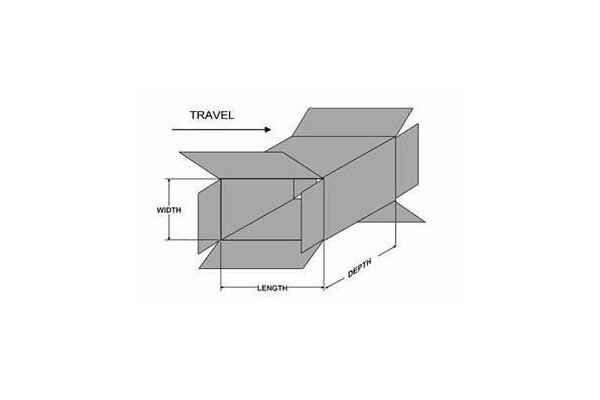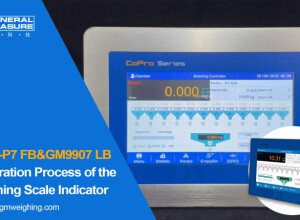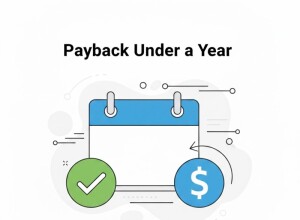Rovema GmbH (Germany) - Bag in box packaging is a packaging strategy where the product is first filled and sealed into a plain flexible package, often a gusseted pillow bag, and then the flexible package is dropped into a carton by a carton forming machine. Common industries or product types often sold in bag in box packaging are ready to eat cereals, baking mixes, snack foods like crackers and even frozen food products.
CPG & Grocery Trends:
It has been observed by our team at many trade shows over the years like Interpack 2017 that the use of Bag in Box packaging is on the decline, being surmounted by premium flexible packages like a doypack bag. There are three reasons why many CPG manufacturers are making the shift from this type of packaging to standup pouches.
- Cost
- Sustainability
- New technologies & market trends (e.g. emergence of standup pouches in shelf ready packaging)
Let's unpack (pun intended!) these one-by-one.
The High Cost of Bag in Box Packaging:
Bag in Box packaging uses twice the materials and therefore has a higher packaging material cost to produce. Obviously, shifting from what is essentially a double package - a carton with a pillow bag inside of it - to a single package results in cost savings for the manufacturer.
Cost savings are not just found in the material itself, but also on the manufacturing line in conserving expensive floor space, and reducing capital investment along with related maintenance and operations costs. Standup pouches, an alternative to Bag in Box, are produced using single VFFS machines which take up less space on the manufacturing floor than a typical Bag in Box line which might include three baggers feeding a single cartoner. Though this produces more packages (up to 300 cartons per minute) it requires more labor. Multiple vertical baggers operating independently will provide redundancy and repeatability while increasing total output.
Transportation costs can be improved by reducing the use of Bag in Box packaging. While a block-bottom bag will typically require the same packing space as a carton, a block bottom bag with bag conditioning can minimize the headspace via a reduction in the trapped air and create a more compact brick-style pack. By more densely packing the product, manufacturers can save on case sizes and the associated shipping costs, often being able to fit more units on a pallet and therefore each truck load. Flexible formats like stand up pouches also reduce the weight of materials for shipping which can result in additional cost savings.
On the store shelves, standup pouches are a natural fit for the cost-saving trend toward shelf ready packaging which reduces labor costs associated with restocking.
Sustainability and Bag in Box Packaging:
Many of the cost-saving opportunities naturally result in increased sustainability due to the fact that you're reducing the amount of packaging for each unit and seeing the ripple effect of savings throughout your supply chain. With big box stores and other large retailers requiring sustainability progress from suppliers, this is top-of-mind for most manufacturers. Walmart, for example, released their 2016 sustainable packaging playbook for suppliers, specifically calling for a reduction of unnecessary extra layers or components, i.e. a bag in a carton.
Consumers are becoming increasingly interested in purchasing products that are packaged more sustainably. Millennials are a generation that has grown up with the most information about environmental safety and how their carbon footprint impacts the planet. They are making purchasing decisions based on the eco-friendliness of a product and its packaging, and are ok if that results in a premium cost. According to Forbes, millennials tend to purchase products from brands that are known to promote corporate responsibility such as sustainability, because it also reflects who they (millennials) are as a person.
Finally, less materials are utilized to produce pouches in lieu of Bag in Box packaging. The volume of primary packaging materials is often cut by more than 50% once you eliminate the extra exterior paperboard packaging. The films being used for pouches are thinner - resulting in even less material use - and recyclable. Paring down to a single piece of packaging also makes recycling easier as one doesn’t have to sort the paper from the plastic.
New Technologies replacing Bag in Box Packaging:
Bag in Box is an old method that was developed for consumer expectations and equipment capabilities common decades ago. But it provided important capability at the time.
A big obstacle to overcome in the transition away from bag in a carton was food preservation. Bag in Box used to be the best option for most, but pouches are becoming very effective. Pouches’ reclosable features are improving and typically include a zip-top closure that most pillow bags used in Bag in Box don’t offer. Films are evolving to provide better barriers that help increase shelf life which improves the value for manufacturers and consumers alike.
Advances in pouch stability favorably compares with cartons. Early stand-up bags were a little wobbly on shelves, making it hard for stocking and for marketing a product. New flexible packaging is a lot more stable. Film companies have made great strides to mimic the stand-up qualities of Bag in Box, making the product stiffer or shaping the corners of pouches to give the carton a better look and feel and allowing it to stand better on its own. Companies are also creating films that perform better on VFFS machines improving throughput and packaging efficiencies.
Finally, there is more that pouch packaging can do in terms of marketing that traditional Bag in Box cannot. Product owners have a better choice of graphics on a stand-up pouch over a carton because there is more exposed surface area. It is less expensive to print on film than cardboard and much easier to do. Brands also get a better quality of ink, brighter colors and more of a variety of finishes for flexible films versus carton, which allows the product to stand out even better on store shelves. And when used as part of a shelf ready packaging system, graphics of the tray and the pouches can be coordinated to tell a bigger story.
Use Cases for Bag in Box:
While the technology is improving and there are many situations for which pouches may be desirable replacements, Bag in Box packaging still makes sense for a few products. Cereal is an example, as most producers typically still prefer this type of packaging. Their biggest barrier is the way cartons are displayed on store shelves. Because they are very tall and narrow, it is difficult to get a stand-up pouch to perform the same way as Bag in Box. There is also a strong tradition in how cereal is marketed - preferably the Bag in Box style - that inhibits brands from pursuing other forms of packaging. Nevertheless, pouches are beginning to make headway at the upper end (e.g. granola) of the cereal market.
Meal kits like macaroni and cheese or Hamburger Helper prefer traditional Bag in Box packaging because these types of products contain several components. Although it's easier to put multiple pouches and individually-packaged ingredients into a box than a pouch, the shelf ready packaging movement is resulting in changing expectations in center of store items like this as well.
Finally, many frozen items may still use a Bag in Box approach, simply because it protects the product better and is easier to display in freezer sections at grocery stores.









































Interested? Submit your enquiry using the form below:
Only available for registered users. Sign In to your account or register here.